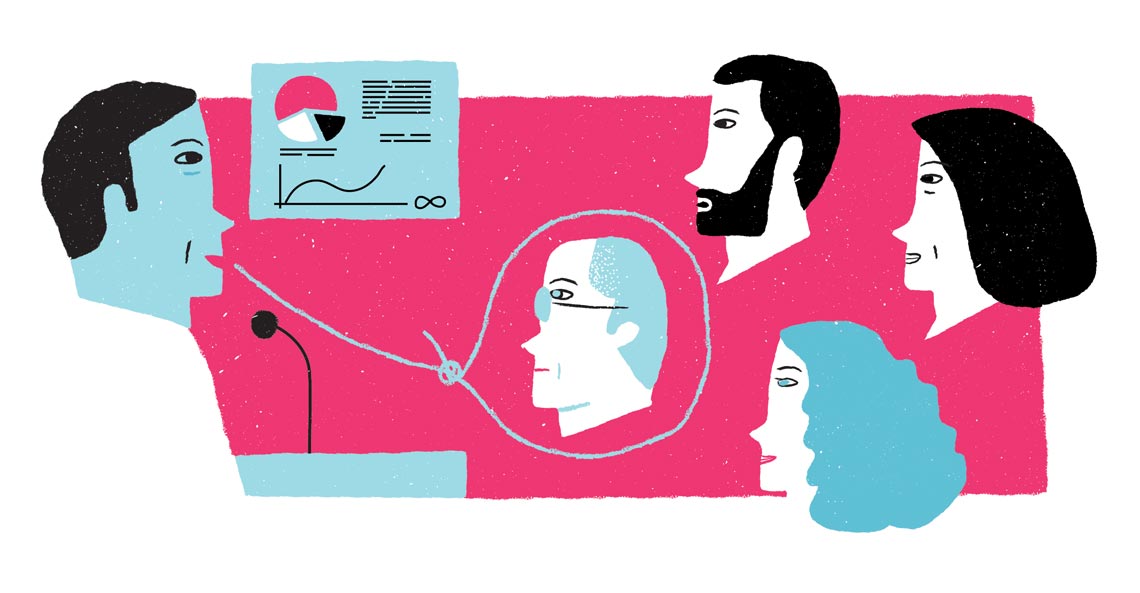Publishing articles in scientific journals is still the main way that researchers share their results, earn recognition from their peers, and advance their career. Public presentations, however—either at the institution where a researcher works or at seminars and conferences—are growing in importance as a supplementary approach. As well as increasing the visibility of a scientist’s work, these activities can also help establish and maintain contact with other researchers, potentially opening doors to promising opportunities and collaborations.
The importance of public presentations and the benefits they offer in terms of career development are well recognized and highly valued in most developed countries. In the UK, institutions such as the University of Cambridge, for example, offer students and young researchers short courses on how to structure more stimulating presentations.
In Brazil, this is still an incipient strategy, although many researchers in the country—just like elsewhere—have difficulty organizing information in a clear, objective, and interesting manner, and feel nervous about speaking in public. Many researchers deal with anxiety and nervousness by including confusing charts and tables or obscure slides with lots of text, which often results in a poor-quality presentation and misunderstandings of the content. Depending on who is in the audience, an uninteresting or unintelligible presentation could hinder potential work opportunities and invitations to participate at other events.
Invitations to speak at public events are important and can act as a barometer for researchers, giving them an idea of the level of interest in their research, not only from their peers, but among the general public too. These events also provide an opportunity to obtain immediate feedback from the public, which can help improve ongoing research, as well as other positive consequences, such as broadening understanding of a field and attracting new researchers to it.
A well-given presentation requires practice and above all, planning, says Monica Levy Andersen, deputy head of the Psychobiology Department at the Paulista School of Medicine of the Federal University of São Paulo (UNIFESP). “It is important to prepare in advance,” she says. “Planning helps the researcher establish the objectives of the presentation and the best ways of achieving them,” says Andersen, who has vast experience giving lectures on the effects of sleep deprivation on the human body.
In her opinion, one of the main mistakes researchers make when preparing a presentation is not knowing their audience. “It is important to know your audience and to be able to adapt the content of your talk to them,” she says. “Talking to a group of scientists at a departmental meeting or a conference specific to your field is not the same as presenting to high school students or undergraduates.”
Neuroscientist Stevens Rehen, from the D’Or Institute and the Federal University of Rio de Janeiro (UFRJ), believes complicated presentations that focus only on the researcher’s message, without also considering public curiosity, can become monotonous and often do not produce the desired outcome. His suggestion, therefore, is to use elements that are easy to understand. “Scientists should aim to choose information according to the purpose of the presentation,” explains the neuroscientist.
Rehen recommends the use of tools that make public communication more user-friendly. “I usually use Prezi, which allows you to create nonlinear presentations. There are many similar programs that allow you to prepare dynamic and captivating presentations,” he says.
Physician Elsa Regina Giugliani, from the School of Medicine at the Federal University of Rio Grande do Sul (UFRGS), highlights how important it is for researchers to provide a broader context for their lectures and to emphasize the importance of what they are going to present. A short summary at the end can help the audience retain the key information presented. “You should always keep in mind the length of the presentation,” she says.
Giugliani also stresses that researchers should speak directly to the audience, rather than reading from slides. “It is essential to engage with the audience,” she says. “Slides should only be used as a guide.”
Rehearsing the presentation in advance, either alone or with colleagues, can also be helpful. That is what Rehen does. “I practice in front of the mirror, with a timer, to make sure my speech is well structured and doesn’t go beyond the time limit,” he says.
Psychologist Ana Arantes, from the Laboratory of Human Learning, Interactive Multimedia, and Computerized Teaching at the Federal University of São Carlos (UFSCar), prepares her presentations at least a week in advance. “That way, I can continue making revisions until
the day of the presentation.”
